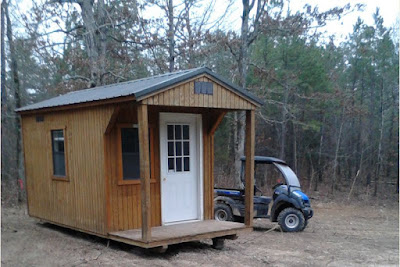In today's fast-paced world, many individuals seek a tranquil escape from the chaos of daily life. Small cabins serve as the perfect solution, providing a cozy retreat in nature. Whether you envision a rustic hideaway in the woods, a lakeside sanctuary, or a charming mountain lodge, this guide will explore everything you need to know about building and enjoying your small cabin.
Choosing the Perfect Location
The location of your small cabin is crucial. When selecting a site, consider the following factors:
Accessibility: Ensure the location is accessible year-round. Check for road conditions and proximity to essential services.
Natural Features: Look for stunning views, proximity to water sources, and natural landscapes that enhance your cabin experience.
Zoning Laws: Research local zoning laws and building regulations to avoid legal complications during the construction process.
Privacy: Choose a location that offers privacy while still being within reach of friends and family.
Designing Your Small Cabin
Defining Your Cabin Style
The design of your small cabin will greatly impact its functionality and aesthetic appeal. Popular styles include:
Rustic: Emphasizing natural materials like wood and stone, rustic cabins blend seamlessly with their surroundings.
Modern: Featuring clean lines and minimalistic design, modern cabins often incorporate large windows for natural light and views.
Traditional: Inspired by classic architecture, traditional cabins may include features like gabled roofs and porches.
Space Planning
Efficient space planning is essential in a small cabin. Consider the following layout strategies:
Open Concept: An open floor plan maximizes space and enhances natural light, creating a welcoming environment.
Multi-Functional Rooms: Design rooms that serve multiple purposes. For example, a living room can double as a guest bedroom with a sofa bed.
Vertical Space: Utilize vertical space with loft areas or high ceilings to create the illusion of a larger cabin.
Building Materials for Small Cabins
Selecting the right materials is vital for durability and aesthetics. Consider the following options:
Wood: A popular choice for cabin construction, wood offers a warm, natural feel. Choose from hardwoods like oak or softer options like pine, depending on your budget and style.
Stone: Incorporating stone elements can enhance the rustic appeal of your cabin while providing durability.
Metal: For a modern touch, metal roofing or siding can offer longevity and resistance to the elements.
Sustainable Materials: Consider eco-friendly options like reclaimed wood or bamboo, which reduce your carbon footprint and add unique character to your cabin.
Essential Features of a Small Cabin
Energy Efficiency
Creating an energy-efficient small cabin is crucial for sustainability and cost savings. Key features include:
Insulation: Proper insulation reduces heating and cooling costs. Consider spray foam insulation or insulated panels for maximum efficiency.
Energy-Efficient Windows: Install double or triple-glazed windows to minimize heat loss and improve energy efficiency.
Renewable Energy Sources: Explore options for solar panels or wind turbines to power your cabin sustainably.
Comfort and Amenities
While small cabins may have limited space, incorporating essential amenities enhances comfort. Consider the following:
Compact Kitchen: Design a functional kitchen with space-saving appliances and smart storage solutions.
Bathroom Facilities: Even a small cabin can benefit from a well-designed bathroom, featuring space-saving fixtures and efficient layouts.
Heating Options: Install a wood stove, propane heater, or electric heating to ensure your cabin remains warm during colder months.
Furnishing Your Small Cabin
Furnishing your small cabin requires careful consideration to maximize space and functionality. Here are some tips:
Multi-Functional Furniture: Invest in pieces that serve multiple purposes, such as a dining table that doubles as a workspace or ottomans that provide storage.
Light Colors: Choose light-colored furnishings to create an illusion of space and openness.
Personal Touches: Incorporate personal decor items and artwork to make your cabin feel inviting and unique.
Landscaping Around Your Small Cabin
Creating an attractive landscape around your small cabin enhances its curb appeal and integrates it into the surrounding environment. Consider these landscaping ideas:
Native Plants: Opt for native plants that require less maintenance and thrive in your area’s climate.
Outdoor Living Spaces: Create outdoor areas with seating, fire pits, and pathways to enjoy nature and entertain guests.
Natural Features: Preserve existing trees and natural features, incorporating them into your landscape design for a harmonious look.
Enjoying Your Small Cabin
Once your small cabin is complete, it’s time to enjoy all it has to offer. Here are some activities to consider:
Nature Exploration: Take advantage of the surrounding landscape for hiking, fishing, or birdwatching.
Relaxation: Use your cabin as a peaceful retreat for reading, meditating, or simply unwinding from daily stressors.
Gathering with Friends and Family: Host gatherings or family reunions in your cabin, creating lasting memories with loved ones.
Maintenance Tips for Your Small Cabin
To ensure your small cabin remains in excellent condition, implement a regular maintenance routine:
Seasonal Inspections: Conduct inspections at the beginning of each season to identify any necessary repairs or maintenance tasks.
Cleaning: Regularly clean your cabin’s interior and exterior to prevent damage from dirt and debris.
Repairs: Address any issues promptly, such as leaks or pest infestations, to prevent further damage.
Conclusion: Your Small Cabin Awaits
Building a small cabin is an exciting journey that allows you to create a personal sanctuary in nature. By carefully considering the location, design, materials, and features, you can craft a retreat that perfectly suits your needs and lifestyle. Embrace the tranquility and beauty of your small cabin, and create unforgettable memories in your home away from home. Whether it’s a weekend getaway or a full-time residence, your small cabin can become a cherished haven for years to come.











.jpeg)






